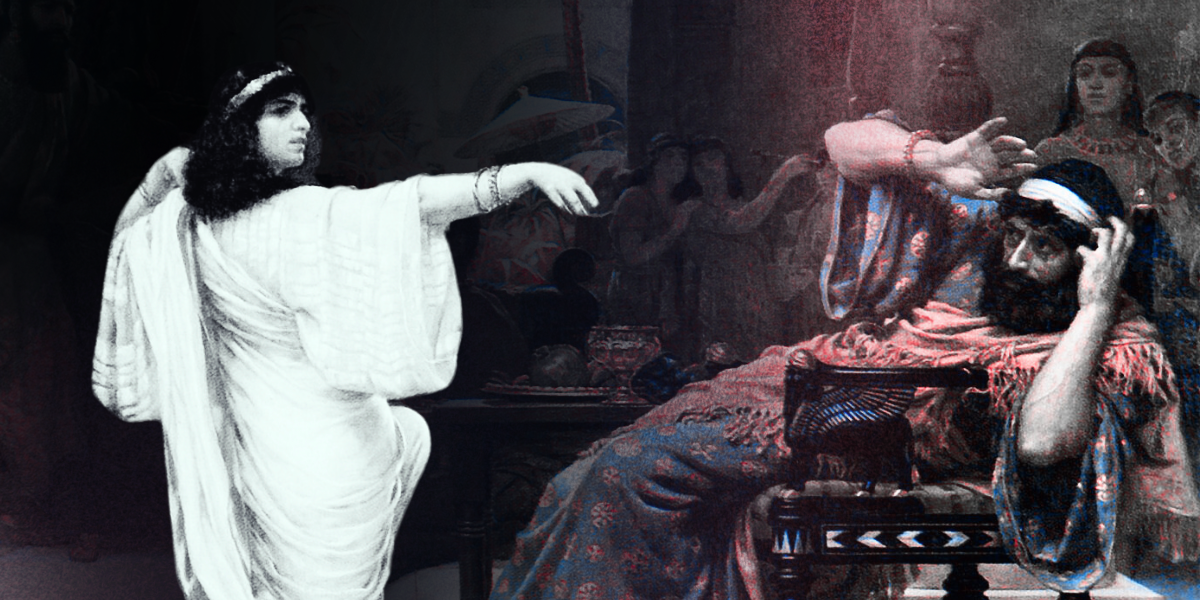Being Jewish
Commentary
Channeling Queen Esther

There are some images of Jewish women that I don’t want to see. That I believe should never be seen. This may seem ironic since I’ve spent the past 12 years advocating for female images to be shown in all spaces, even the most religious, where they are often erased or blurred.
Over the past 15 to 20 years, photos of women and girls have been steadily banned from many Orthodox publications in Israel, the United States, the United Kingdom and other Orthodox communities to appease the most insular sects of Judaism who take the Jewish concept of modesty to extremes. I have written extensively on this social phenomenon and its negative psychological ramifications for girls and women, indeed on the entire observant community.
The organization I co-founded, Chochmat Nashim, has launched projects to combat this alarming trend, including The Jewish Photo Bank, a digital collection of stock images of observant women and families. We hope that our advocacy will normalize images of women to create a more moderate Orthodox community.
But the reason I believe that images of Jewish women must be shown in magazines and books and on billboards is the same reason I believe the photos of Israeli women who were assaulted and mutilated on October 7 should not be published. Some of these victims were shot so many times in the face that, according to Shari Mendes, an Israel Defense Forces reservist who helped prepare their bodies for burial, “It was like there was purposeful obliteration of women’s faces.”
The Hebrew word for face, “panim,” comes from “p’nim,” which means internal. Our faces reflect who we are on the inside, our individuality. When we remove a woman’s face, we remove her tzelem Elokim‚ her Godly reflection, essence and humanity. And while erasing women’s images is not the same as sexual assault, in both cases, the humanity and dignity of women are denied.
That denial is devastating and has far-reaching consequences. This is something I’m thinking about as we approach Purim, a story rife with men who control women, and as the world demands unreasonable and dehumanizing visual proof before they acknowledge Hamas’s brutalization of women.
For a majority of Jews, Purim is among the most joyous and exuberant holidays on the Jewish calendar. One where good (Mordechai) triumphs over evil (Haman), the Jews beat their enemies and God saves us once again.
But for me, Purim, which falls this year on March 24, has increasingly come to symbolize the women of the story, all of whom suffer and are exploited in some way. From Esther to Vashti to the tens of thousands in King Ahasuerus’s realm who were commanded to submit to their husbands’ desires or were rounded up to be offered to the king. Megillat Esther is replete with the loss of women’s agency.
Esther, who saved us from the decree to kill the Jews, was not herself saved. She was condemned to a marriage she did not want, with a man she could not refuse. She has symbolized agunot—women chained in marriage because their husbands refuse to grant them a Jewish divorce—for decades. Indeed, International Agunah Awareness Day is typically observed on Ta’anit Esther, the fast day preceding Purim.
Vashti, Esther’s predecessor as queen, was silenced for refusing to display her beauty at the king’s banquet. As a result of his anger, and his advisers taking advantage of that anger, hundreds (thousands?) of young women were made to parade themselves before Ahasuerus. The megillah indicates that they were each forced to be with him for one night and condemned to the harem forever more, until and unless he called for them again: “She would go in the evening and leave in the morning for a second harem…. She would not go again to the king unless the king wanted her, when she would be summoned by name (Esther 2:14).”
How many other Jewish women were taken from their families and held in captivity, never to be heard from again?
Which brings me back to women’s dignity and agency not only in Shushan 3392, but today in 5784.
Within the Jewish world, women’s self-determination and humanity are being denied, both by being trapped as agunot and by being erased from printed material that only allows pictures of men or boys, whether in a newspaper, a cookbook or an IKEA catalog printed for ultra-Orthodox customers in Israel. In the wider world, our Jewish sisters’ dignity is being erased by the chorus of October 7 rape denials and demands for visual proof.
It is the same fight. It is Jewish women being seen and heard only on someone else’s terms.
Ultimately, the Jewish people of Shushan were saved by Esther when she took control of her narrative. No longer acted upon, she acted. And far from giving in to Haman, the king’s nefarious minister who was plotting against the Jews, she looked evil straight in the eye and called it by its name: “And Esther said, ‘An adversary and enemy, the evil Haman!’ And Haman cringed in terror before the king and the queen (Esther 7:6).”
Jewish women today must again call evil by its name and refuse to be erased or exploited. By anyone.
Shoshanna Keats Jaskoll is a writer, activist and speaker. Her work can be seen in the Times of Israel, The Jerusalem Post, The Jewish Chronicle and other outlets.










 Facebook
Facebook Instagram
Instagram Twitter
Twitter
Leave a Reply